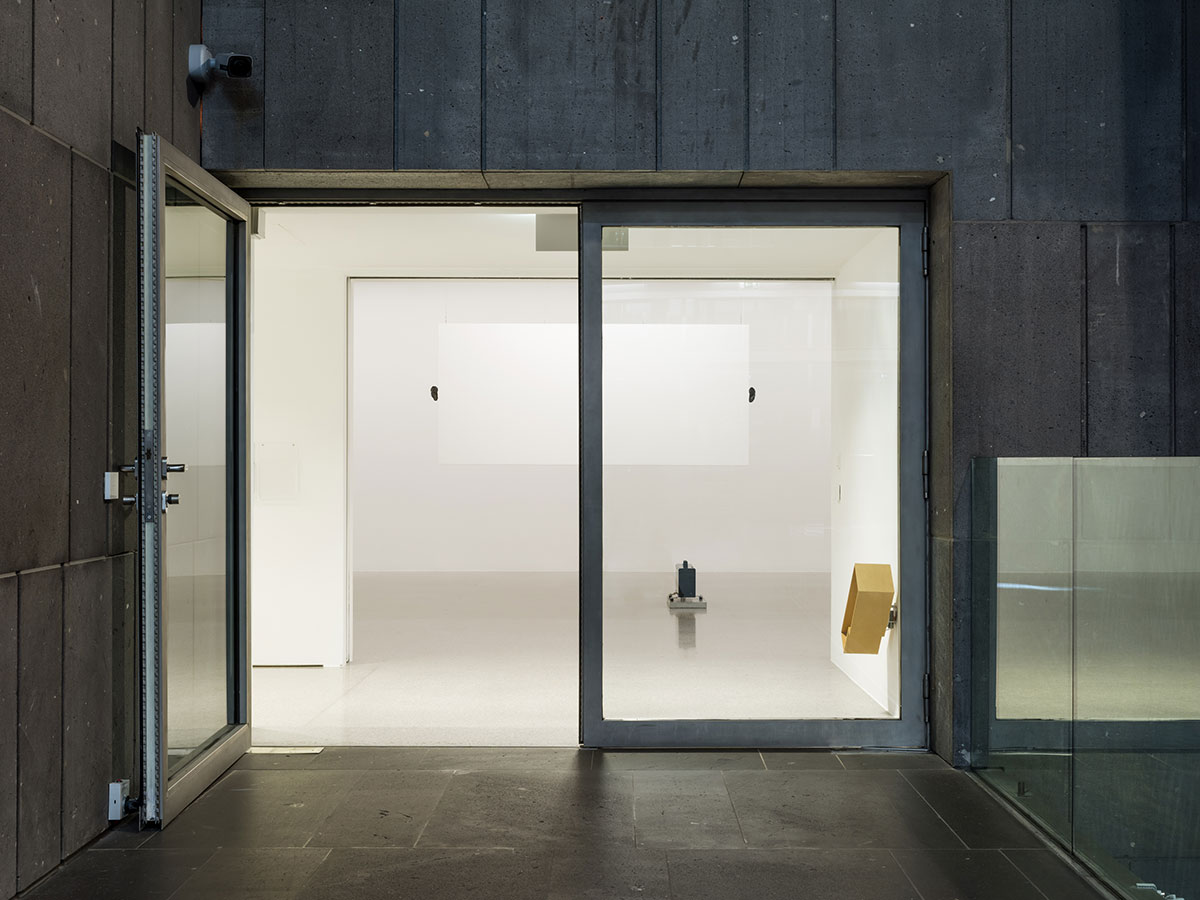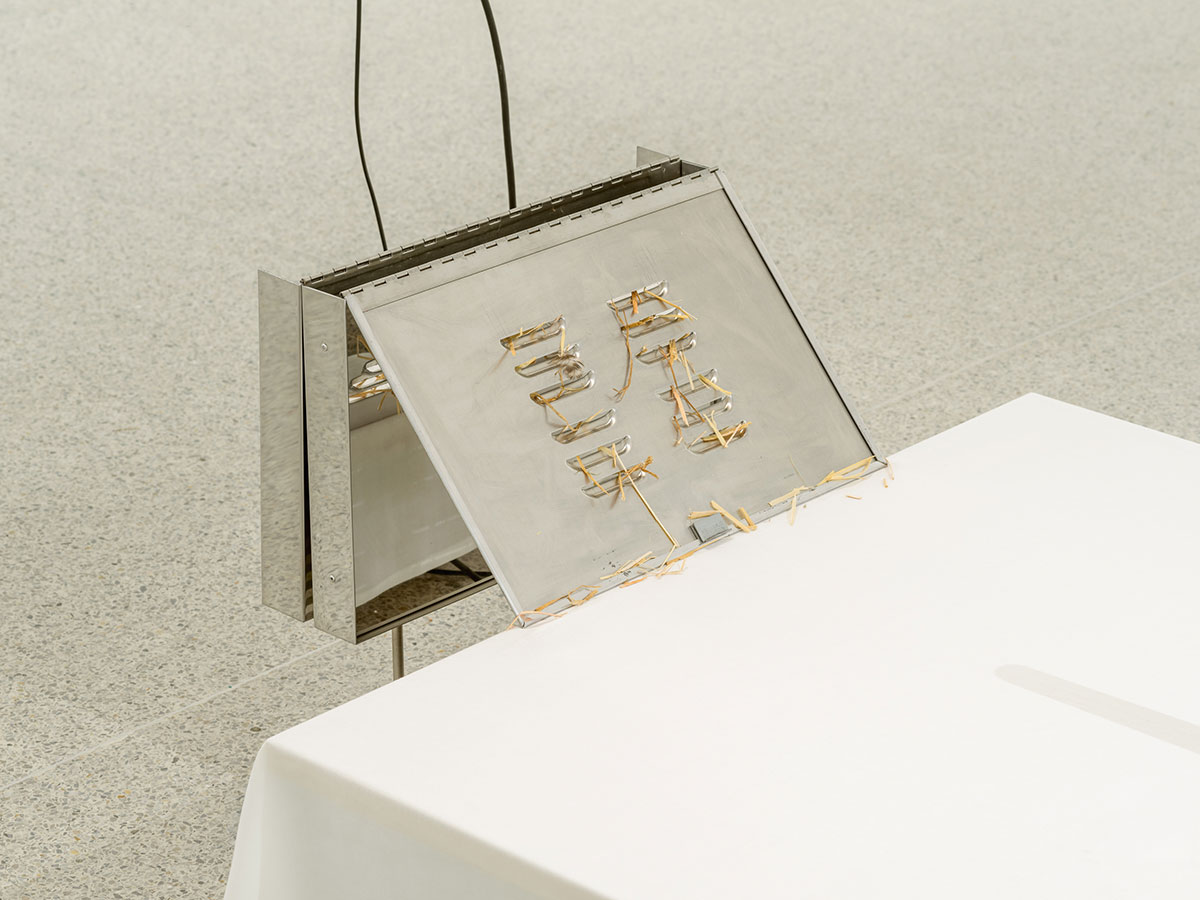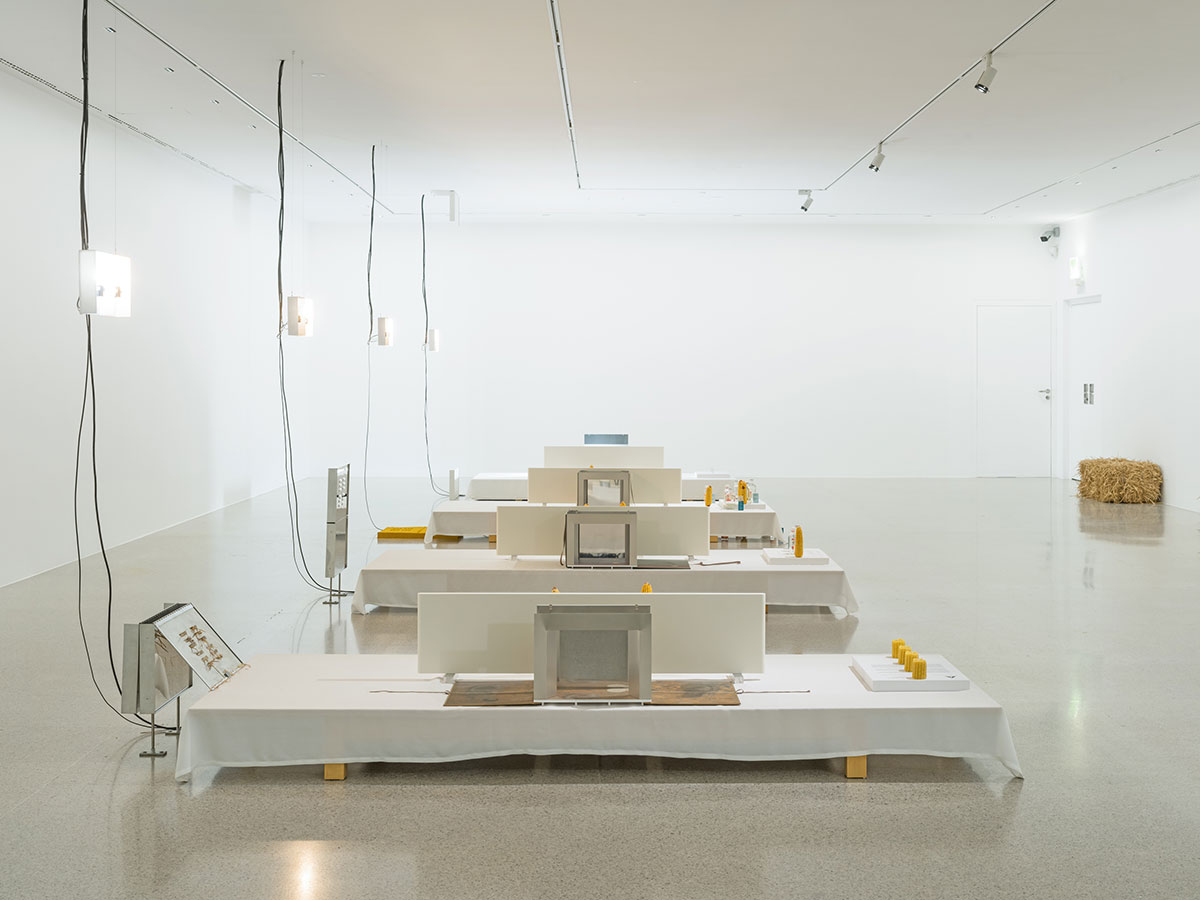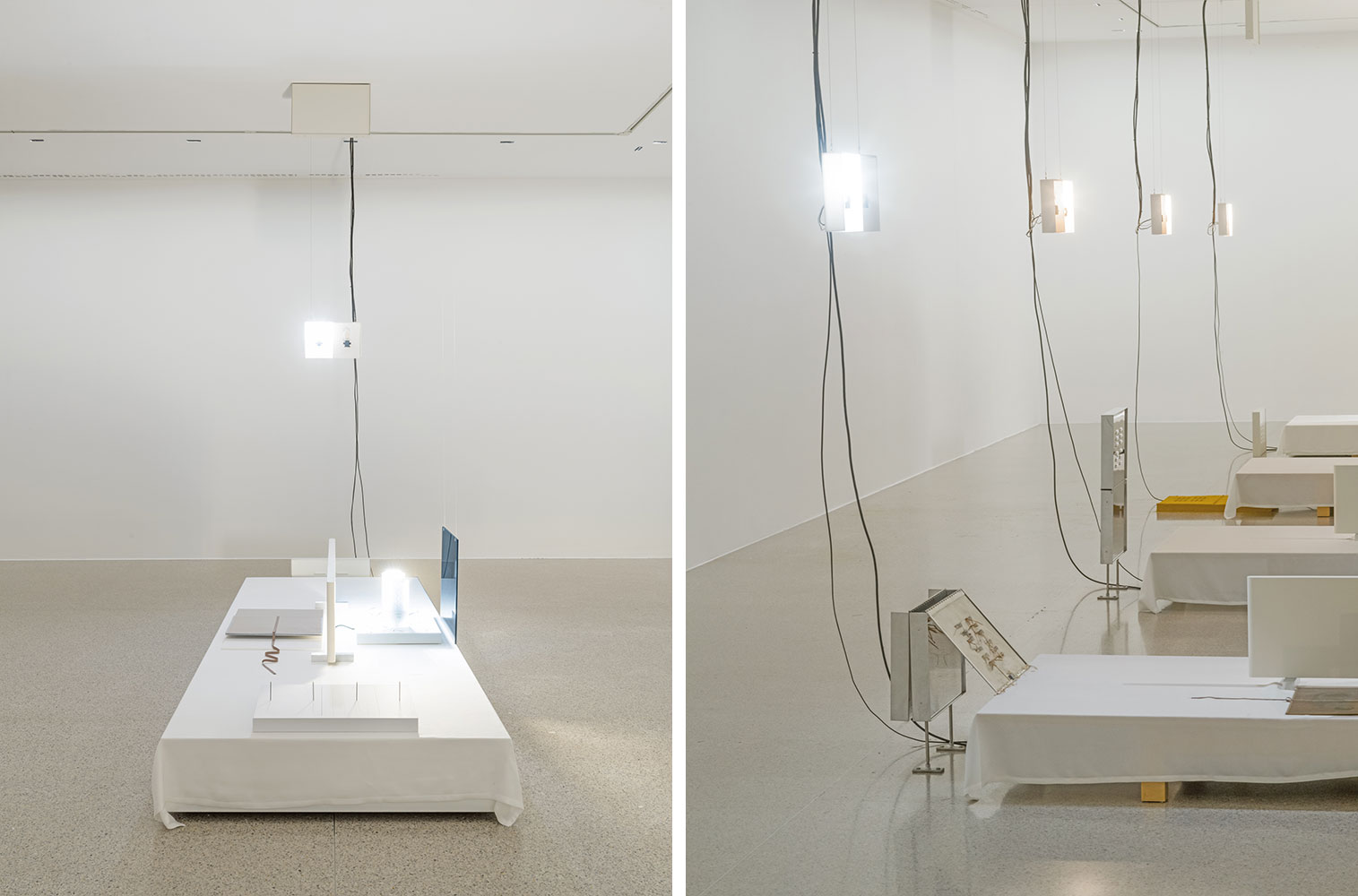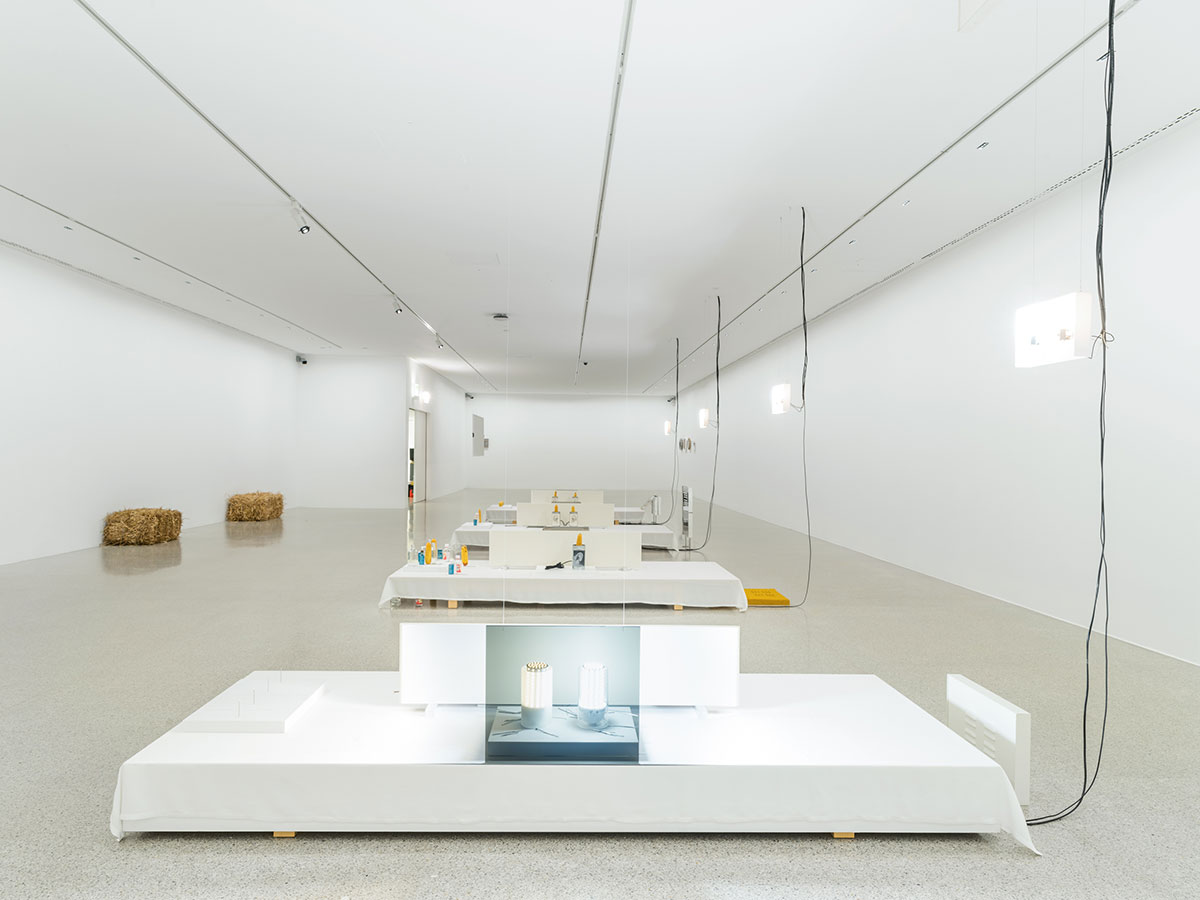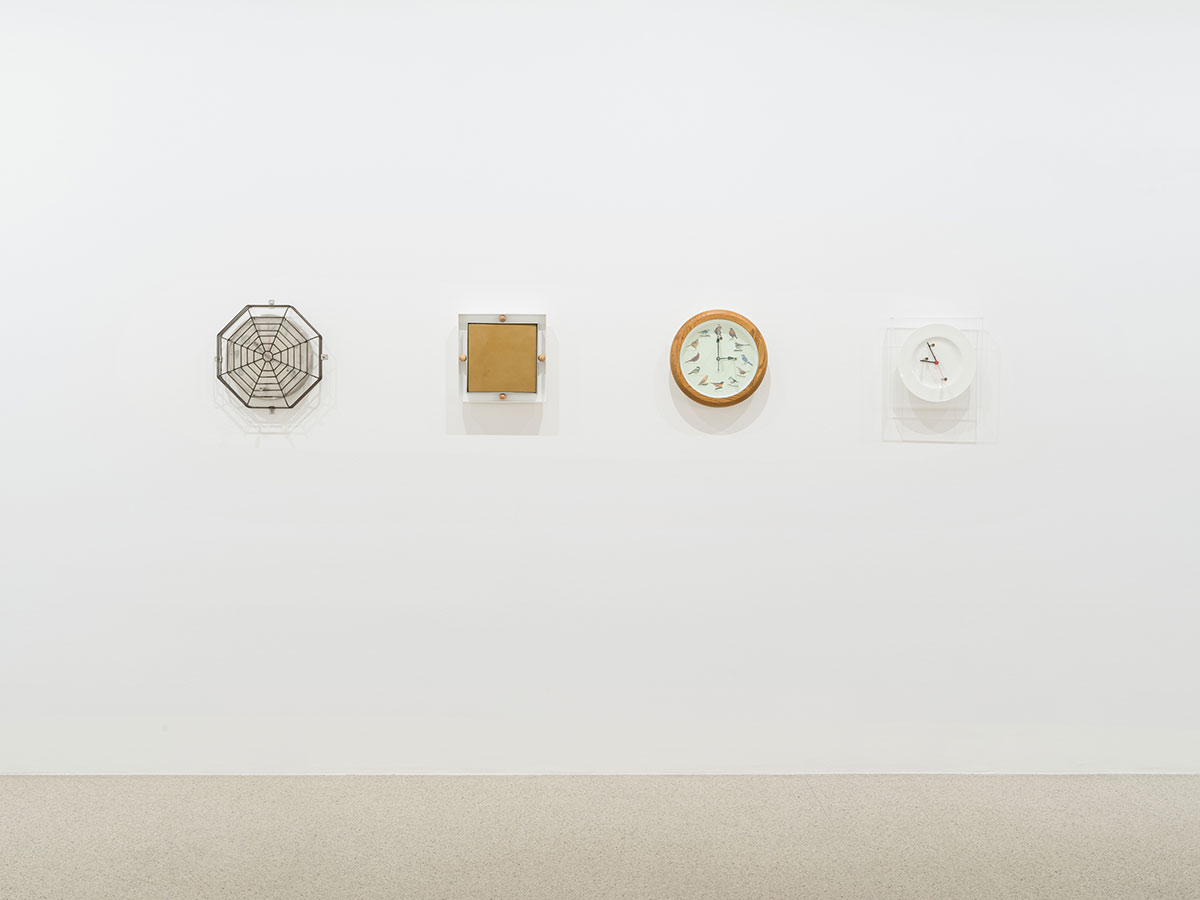PRESENTATION: Jesse Stecklow-Terminal
 Jesse Stecklow’s artistic practice builds upon the collection, analysis, and circulation of ecological data that is typically invisible to the human eye. The artist works with a clearly defined repertoire of objects, which oscillate between text, image, and sound. His sculptures enter into a direct dialogue with their surroundings and virtually merge with them.
Jesse Stecklow’s artistic practice builds upon the collection, analysis, and circulation of ecological data that is typically invisible to the human eye. The artist works with a clearly defined repertoire of objects, which oscillate between text, image, and sound. His sculptures enter into a direct dialogue with their surroundings and virtually merge with them.
By Dimitris Lempesis
Photo: mumok Archive
For Jesse Stecklow, it has less to do with the objects as such than the diverse narratives generated by site-specific shifts in context. He refers to his objects as characters, which play different roles depending on the situation and take on multiple identities in the form of disparate iterations. In his first solo exhibition in a European museum entitled “Terminal” Stecklow transforms the exhibition space into a waiting room, thus making reference to the ongoing pandemic. The artist structures the perpetual reiterations of his formal repertoire – the representation of his objects in modified versions – with the aid of displays, which assume a hybrid form between baggage conveyor and dinner table. A decision that points out how the pandemic offset public and private space: while the once bustling airport terminals became emptier and emptier, the formerly lonesome dinner tables were overflowing and now also served as office and school desks. Today, when we speak of “data,” what comes to mind are primarily digital collections of information – an abridgement that Stecklow overrides by taking a significantly broader and foundational stance toward the term. With the formulation of a “system of ecological data collection,” which has led to technically rudimentary works, such as “Text Trap I” (2016) with its use of fly tape, as well as highly tech savvy objects like the “Air Sampler” (since 2014), Stecklow sidesteps the apparent objectifying digital data craze of our age. He creates a loop in which the material data he collects – more precisely, their analysis – influences future iterations of his works and thereby forms the conceptual anchor point of his practice. Stecklow began working with this process of circulating data in 2014 with a work group called: Untitled (Air Sampler), which employs a method of collecting room air for microbiological analysis. Encased in a polished aluminum housing, the air sampler presents itself as a sculpture. Over the course of the exhibition, the air sampler acts as a custodian of sorts, registering all of the invisible environmental changes – in particular, changes that have been triggered by the presence of the visitors, who unknowingly contribute to later manifestations of the object and thereby become a significant part of the work. At the end of the exhibition, the recorded data in the air sampler is analyzed at a laboratory. The results, in turn, form the conceptual basis for the next version of the air sampler. The sculpture ”Untitled (Air Sampler)” (2017) encases a testing device that captures particles in the air with the use of a filter. At the conclusion of the exhibition, the filter will be analyzed in a lab to ascertain the composition of the air. Stecklow’s earlier installations of air sampling devices revealed a prevalence of ethanol and corn-derived compounds, a discovery that led the artist to develop artworks based on corn, and to investigate its pervasiveness in the American landscape. Stecklow fit the air sampler into a custom-crafted, polished metal case modeled after an electrical box to draw attention to the connection between energy sources and air quality as environmental factors that are often unseen. Working remotely to create site-specific works, Stecklow mapped the floor plan of Bainbridge House in his Los Angeles home with string. The base of each “Box Set” features an image of Stecklow’s floor, onto which pictures of his sketches and sculptures, as well as fragments of the string map, are printed as raised patterns. The imagery on the Box Sets also includes paper dots that Stecklow and his mother, Anne Krinsky, who is also an artist, share as a motif in their work. In these ways, the Box Sets collapse both physical and psychic spaces: they link Los Angeles and Princeton through the layering of architectural elements, and they connect Stecklow’s current practice to memories of his childhood in his mother’s studio. The “Ear Wiggler (LEFT and RIGHT)” (2015) combine the objective data from the air samplers with narra-tives personal to the artist—specifically, memories of his grandfather. With this work Stecklow uses this data as a springboard to create a sequence of associations with corn. Ear Wigglers pay homage to Steck-low’s grandfather, the sculptor Henry Krinsky, who had an exceptional ability to wiggle his ears and who often used humor as an entry point into his artistic practice. These connections play out in the Ear Wigglers—they spin for thirty seconds every four and a half minutes, creating a short-cycle clock, animating an ear of corn and a drawing of Krinsky’s ear simultaneously.
Photo: © Jesse Stecklow
Info: Curator: Marianne Dobner, mumok (Museum moderner Kunst Stiftung Ludwig Wien), Museumsplatz 1, Vienna, Austria, Duration: 20/5-25/9/2022, Days & Hours: Tue-Sun 10:00-18:00, www.mumok.at
